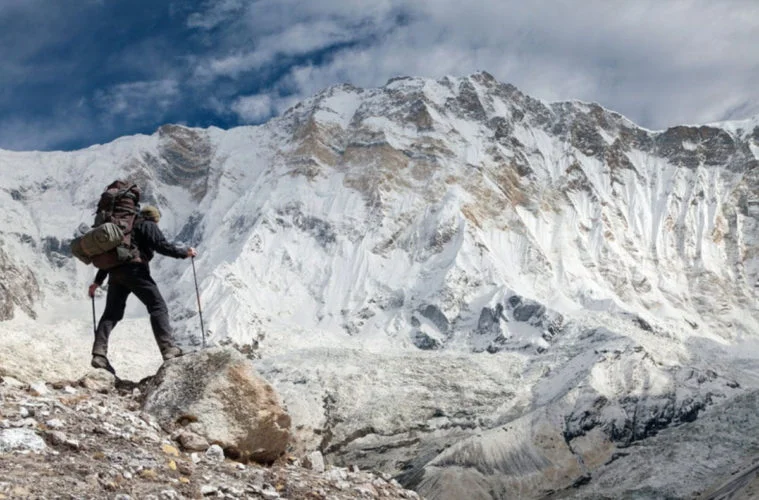How to Stay Safe on the Annapurna Circuit Trek
The Annapurna Circuit Trek is one of the most epic hikes in the world, a 160–230 km (100–145 miles) trek over hills and mountains, trek through the amazing Himalayas in Nepal. It drops you into a landscape of terraced fields, rhododendron forests, and large, snowcapped peaks earlier than cresting at the formidable five,416-meter Thorong La bypass. Big risks accompany big rewards on this alpine adventure. Completing the Annapurna Circuit trek is not just about physical strength – it’s got to be about preparation and safety. But armed with some knowledge of the terrain and safety tips, your journey across it can be an amazing one – and you don’t have to do so at the expense of your life. This Ultimate Guide contains every essential safety practice to help ensure your expedition through this beautiful landscape is nothing short of epic.
Manage the Altitude: Saving a Life Slow Acclimatization
The greatest danger Annapurna Circuit hikers will face is Acute Mountain Sickness, and this can turn serious within an hour, as life-threatening High Altitude Cerebral Edema or High Altitude Pulmonary Edema. The fast ascent, and especially above 3000m, requires that one be very strict in mastering acclimatization. The gist is straightforward: Put on the brakes. Never go up more than 300 / 500 metres in a day above about 3000 metres, and ensure you have most definitely “rest days” except perhaps a village such as Manang, which is perfect for those acclimatization walks. Putin “climbing high; going to sleep low” is your golden rule: Every time you rest, hike up to a higher viewpoint and back down for the night.
Mandatory Guidance and Emergency Preparedness
It’s officially banned now for foreign travelers to go independently on the circuit trails, which is why it took us this long (since 2023 AD), and every international trekker must have a Licensed Nepalese guide. The policy is a crucial safeguard. They are not map reader or something, as a professional, they know two aspects of the mountain: local cultures and Emergency periphery. They can notice the first, faint signs of altitude sickness; negotiate trail hazards; communicate to local health posts on their behalf, and — crucial — arrange an emergency helicopter evacuation if serious medical trouble ever does erupt. Your guide will also need full comprehensive travel insurance.
Packing just right, and gear for any weather
The climate is fickle and might trade in an instant. And your armor is a nicely deliberate, layered apparel gadget. ‘* begin with synthetic base layers that wick moisture away from your body, layer insulating mid-layers within the form of fleece or down jacket, and top the entirety off with a waterproof windproof shell jacket and pants. For footwear, convey, water-proof trekking boots already well broken in with desirable ankle support for numerous terrains such as rock paths, scree slope, and (perhaps) ice. Add-ons, consisting of high-end UV-protection sun shades to ward off snow-blindness, a heat hat and gloves, or sunscreen and lip balm with an extremely high SPF level: the sun is a lot stronger at altitude.
Negotiating path and Terrain dangers
Although the Annapurna Circuit is reasonably well-marked, there are occasions when you will walk for many hours (or even days if in isolated parts) without seeing signs. Stay on trails as closely as possible. Shortcuts are tempting, of course, but they’re almost always screwy or lost or wasted fuss and finds. Where it is icy, there will be steep descents and narrow river crossovers. Hanging suspension bridges is a common and splendid feature of the trek: they are usually safe to cross, but be sure to do it one or two at a time, walk across steadily with no bouncing. There are some seasonal hazards for landslides and rockfall, most particularly during the monsoon. Hey, your guide is informed about where the current dodgy spots exist. Do you ever miss a cicerone?
Hydration, Nutrition, and Food Safety
These are the safety aspects, being thus full of energy-flow and free of any side effects on the stomach. Dehydration is only going to make you feel worse, so it’s key to keep drinking. At tea houses, bottled water can be purchased, and it contributes to the plastic footprint. Highly recommended to take your own reusable bottle and some water purifying tablets, drops, or a filter system. Little Bombay is the land of Bishal (950 ), and most of the tea houses also sell you hot water for cheap if that floats your boat. Choose easy, freshly prepared meals like dal bhat (lentil soup with rice), a filling, however excessive-carb staple that is mild on the stomach and offers loose refillsKeepep away from uncooked salads and unpeeled fruits, which can also have been rinsed in contaminated water. It can never be overemphasized that good hand hygiene with washing before every meal is essential.
Health Check and Listen To Your Body
A fool climbs in pain or when very tired; it’s often an invitation to injury or altitude sickness. Hear what your body says about the exertion and the altitude. You need to also have mild headaches, however if you have become excessive headaches or having nausea and vomiting collectively with dizziness and feeling burdened, as quickly as againn that is the sign that you want to forestall your ascent. in case you notice any uncommon conduct among your self or specific participants of your birthday celebration, which includes a chronic cough, trouble respiratory, or any version of their traditional taking walks fashion, inform your guide at once.
Adventure insurance and Evacuation necessities
The travel insurance is one of the nonnegotiable pieces of your safety net. Before committing to your trek, check that the policy covers helicopter evacuation up to 5,416m (the height of the Thorong La pass). See what form of contact needs to be made in case they need to switch on for an emergency. In the event of a medical emergency, your guide or trekking team will communicate with the evacuation coordinator. You will also be required to carry at all times, one original and a photocopy of your insurance certificate and 24-hour Emergency Assistance card (this is so important) during your holiday.
Psychological and Physical Preparation Before Going Out
Your best security is one that begins far before you’re in Nepal. The Annapurna Circuit is not for the unfit. Your training regimen should include a weekly routine of cardiovascular exercise, strength training (with an emphasis on the legs and core), and, if you can manage it, some practice hikes in which you’ll be walking hours at a time, wearing and carrying a backpack with weight in it. There will be great days and there will be low days, but a good attitude and the knowledge that you are becoming well prepared is your strongest weapon on a traverse of the High Himalayas!
There you go, people — the final word on how to stay safe and do well.
The Annapurna Circuit Trekking is a stunning and demanding trek with plenty of opportunities for pilgrimage. It is a noble — nay, it’s an anaristocrat-and should be treated with respect, with care. With a conservative approach to slow and mindful acclimatization, hiring a licensed guide, high-altitude inclusivity in travel insurance, as well as packing the right gear, you are mitigating the risk. Safety is a thing you do, constantly making informed picks about pacing and hydrating and tuning into the diffused language of what your body needs. Tread softly on the mountains and tread extensively in your journey, and you’ll not only have a secure journey to the Annapurna Circuit, but a lifetime journe






